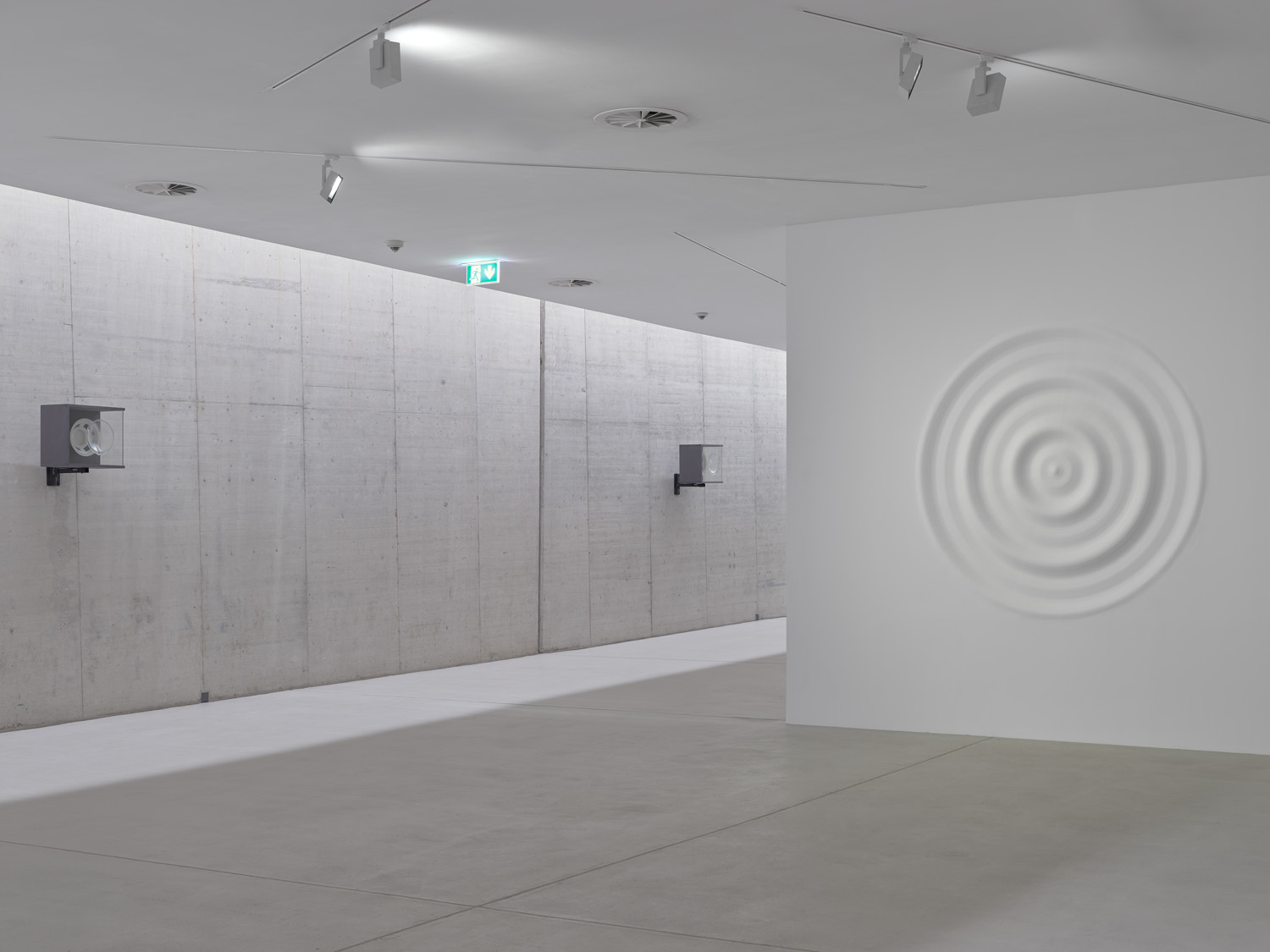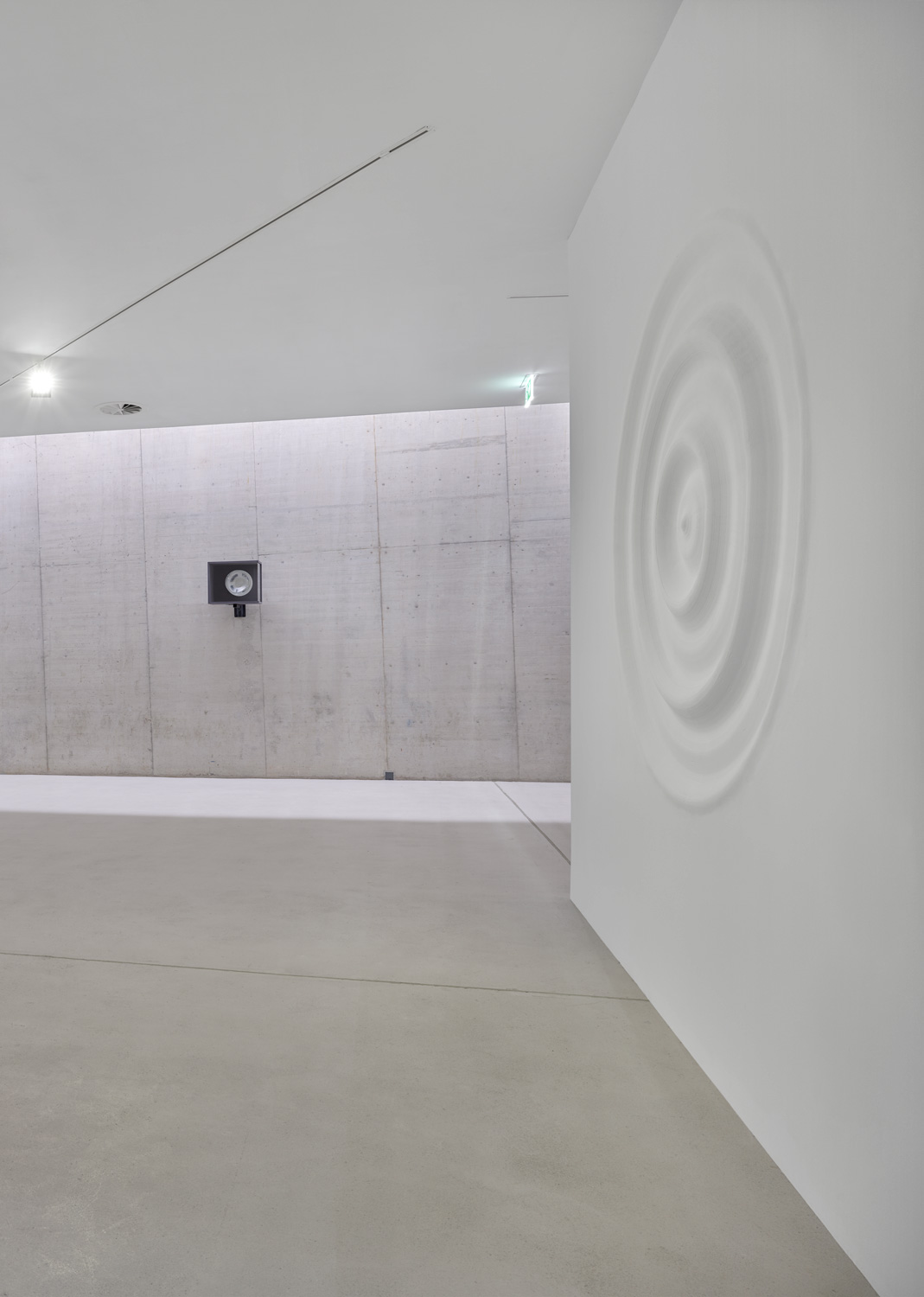Superposition/Speakers
"You hear absolutely nothing and see little." H.M.
What are the limits of listening—physically, sociologically,
economically and acoustically—in present society? This work looks at
interactions between sound, sculpture and architecture, to develop new
approaches to listening. What kind of material form can represent
sounds—the interaction of waves—without using the classical artistic
stereotypes of abstraction?
Most of our sounds and noises come from the tool that we call the loudspeaker. The classical moving coil loudspeaker we use today was patented in the United States in 1925 by two engineers after whom it is named the Rice and Kellogg loudspeaker. Although most of our communication devices have been changed and adjusted to more recent technologies, this tool has yet to be superseded.
I have designed several loudspeakers that are inherently mute: they
only evoke sound visually. The membrane of the loudspeakers are made
of melted plate glass and the support for the membrane— or so called
basket piece—was made through the 3D design process. The 3D mesh of
each basket was altered by a 3D effector tool that creates
disturbances similar to a wave on the surface of the mesh. The meshes
of these baskets were printed and assembled with the glass membranes.
Superposition of Waves
The second part of the project is a large cylindrical object called the solid of revolution which was embedded into the wall of the exhibition space. In mathematics, a solid of revolution is a three-dimensional form created from a silhouette by rotating it 360 degrees around an axis. Similarly, in the practice of architectural mold making, a prefabricated profile tool is used to create a solid of revolution by rotating the profile and continuously adding layers of plaster to the base of the mold.
In this instance, the silhouette was created from the profile of two
superimposed sinus waves and the rotation of the tool added some
irregularities like grooves to the form. Sinus waves are the most
basic elements of any soundscape. Sinus waves dominate our everyday
soundscape, therefore the understanding of their interaction with each
other is essential to our perception.
Modes of listening
According to Pierre Schaeffer (1910 – 1995), French composer and the inventor of musique concrète, we can distinguish between different modes of listening when listening to sounds with unseen sources. In variation in listening, we are listening to natural and pre-recorded sounds by using sound reproduction devices, i.e., loudspeakers. In Schaeffer's explanation, during variations in signal , the receiver is listening to prerecorded modified signals that are modulated on an analog, or now digital audio device, these signals can also mimic natural sound. With this mode, we added an infinite variation of signals to our perception. However, sometimes we can also listen to the effect of sound, this method raises the subject's awareness of its own listening by utilizing the various listening modes. The environment aims to capture these modes and evoke listening to effects.

In this environment pure sounds are present in the form of the wall with the super-positioned sine waves. The loudspeaker is reminiscent of sound reproduction and, by default, is there to offer the variations of listening.

installation @ Kunst Im Tunnel
images: Ivo Faber, 2020.